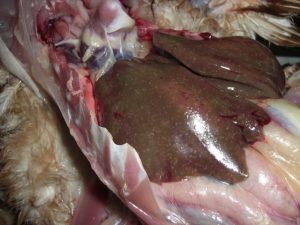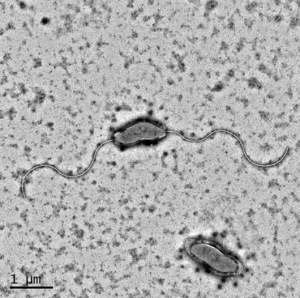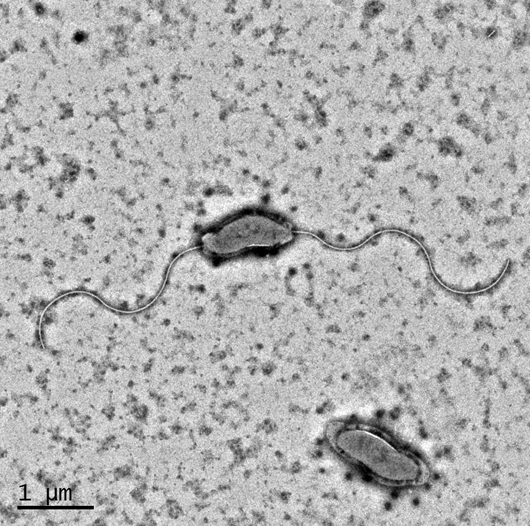Spotty Liver Disease in Laying Hens
Robert Moore, Peter Scott and Hao Van
RMIT University; Scolexia Pty Ltd
Spotty Liver Disease (SLD) is an emerging disease in extensively housed poultry. It’s most commonly seen in free-range layer hens but has also been reported in broiler breeders. The signs of disease are variable ranging from low bird mortality with minimal impact on production to a sudden onset of significant mortality with a reduction in egg production. Such impacts on bird health and productivity have serious economic consequences for egg producers in the expanding free-range layer sector in Australia. Additional to these productivity losses is the costs associated with treatment during outbreaks of SLD and current attempts at implementing non-antibiotic in-feed preventative programs.
Although the disease has been recognised for over 60 years it is only in the last decade that the disease has become a significant issue for the layer industry with the change away from cages to extensive production systems. Commonly, the disease becomes clinically evident when flocks are approaching peak lay. SLD can occur at any age but particularly when layer production flocks are experiencing husbandry or environmental stressors.
When mortalities are investigated the birds are found to have lesions in the liver; usually the surfaces of all lobes are covered in 1-2 mm pale spots (Figure 1).

It is assumed that the pathogenesis of SLD, which results in damage to the liver, is causally associated with the depressed egg production and increased mortalities. Flocks can recover from low level incidences of SLD spontaneously or in more significant outbreaks after therapeutic intervention following treatment with chlortetracycline. A feature of SLD is that disease outbreaks can reoccur multiple times, requiring repeat treatment.
Despite decades of looking for the aetiological cause of SLD is was only in 2015 that the bacterial cause of the disease was identified, first by an English research group and then confirmed and characterised more extensively here in Australia. Collaborative research carried out by RMIT University and Scolexia Pty Ltd has led to the isolation and characterisation of the bacterial pathogen responsible for causing SLD in Australian flocks. The pathogen has been identified as a new bacterial species that we have named Campylobacter hepaticus (Figure 2).

We have developed PCR-based methods for the specific detection of C. hepaticus in complex biological samples (e.g. intestinal contents). The collaborative partners have established an experimental disease-induction model that produces typical clinical SLD in layers and this is now being used to study the mechanisms of disease pathogenesis. Recognising the negative impact to the layer industry Australian Eggs is supporting the collaborating partners to use their disease model to evaluate potential ways to control the disease or lessen its impact.
Vaccine formulations are being developed by ACE Laboratories and tested in the disease model and various non-antibiotic feed additives, such as short and medium chain fatty acids, probiotics, and plant extracts, are being evaluated for their efficacy in preventing or ameliorating the impact of SLD. With a continued dedicated research effort and support from Australian Eggs, industry, and other funding bodies we aim to understand more about the disease and develop control methods that poultry farmers can implement to improve the health, welfare and productivity of their egg production flocks.


